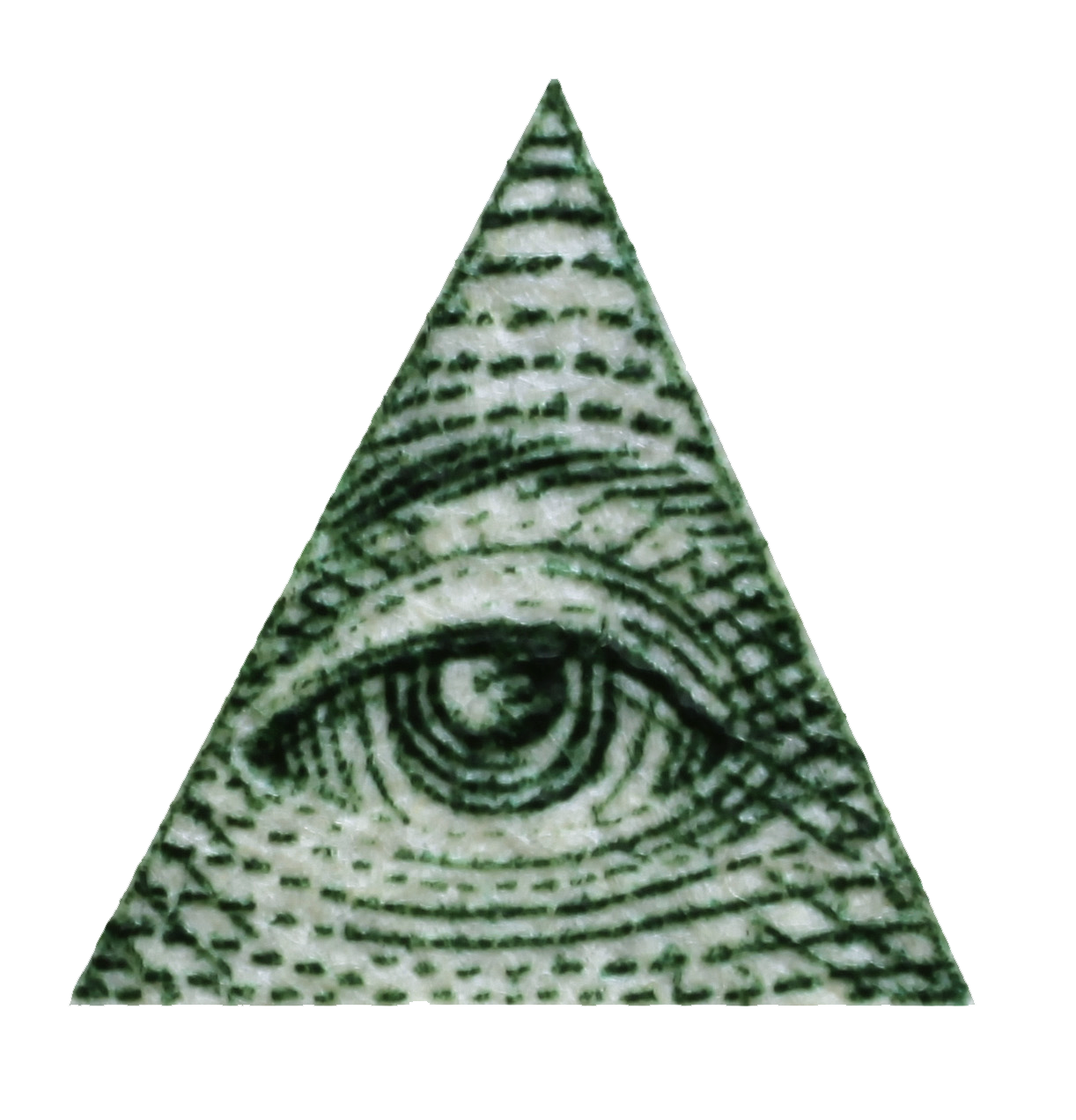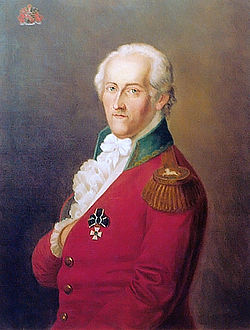The existence of an Illuminati order seems to be up for much debate, with some claiming that it’s just a figment of our imagination, while others citing world events like the American Revolution and the concentrated levels of wealth as evidence of the Illuminati’s control of the fate of the planet’s population. We at TopTenz are happy to announce the truth. Yes, the Illuminati order is a real thing, but it just so happens that it was only relevant in the 18th century. Here are the top ten facts about the Illuminati, and its rise in Germany.
10. Origin of the Term

There is no exact date when the term “Illuminati” came to be used, but it has been reported that the first use came from Spanish occultists towards the end of the fifteenth century. Those deemed Illuminati were those alchemists and magicians who had a certain glow, or possessed the “light” of spiritual illumination from a superior being, the so called greatest light. Other reports of the terms origination lead to Gnostic dualism, a set of beliefs deemed heresy by the church, that held that a true emissary from the Supreme God could not have been overcome by the evil of the world and that knowledge of transcendence arrived at by way of the internal. What is clear is that the Illuminati were against the church’s way of thinking and tried to create new ways of pursuing “truth” and thus challenging the established order.
9. Foundation of Secret Society
Records show that the foundation of the Order of the Illuminati took place in the city of Ingolstadt in the southern German province of Bavaria on May 1, 1776 by Adam Weishaupt. A professor of religious law, Weishaupt managed to grow the Illuminati from its initial five members to about sixty in five cities by 1780. Using his knowledge of other mysticism groups, he blended the supernatural into the working of the brotherhood in an attempt to make his calls for republicanism a more interesting cause than simply a political reform group. One of the most intelligent decisions Weishaupt would make was his decision to join the Masons and adopt many of their classes and orders. All groups promise something, and Weishaupt told his members that progression through the orders would come with special communication of occult knowledge, i.e special abilities/powers.
8. Adolf Francis, the Baron Von Knigge

Nowadays, if Oprah Winfrey recommends your book, it’ll be a best-seller by week’s end. Think of Adolf Francis as having Winfrey’s influence over the Bavarian and German nobleman. Documents show that Weisphaut’s Illuminati did not reach its great heights until he managed to attract the interest of Francis, the Baron Von Knigge. Francis was a master occultist and had risen to the highest levels of other secret societies, including the Masons. Together, Weisphaut and Knigge managed to meld the supernatural with Weisphaut’s ambition of political revolution. Soon after the Baron’s sponsorship, the order of the Illuminati saw its membership swell to 300 men throughout all parts of Germany. By 1784, Illuminati membership had risen to 3,000, and the secret society appeared on the verge of assuming control of the entire Masonic establishment.
7. Conflict
With every great rise comes a fall, and with the Illuminati it was no different. The Illuminati’s fall from grace began with the conflict between its two leading members, Weishaupt and Baron Von Knigge. While it is unknown what exactly caused the discord, in April of 1784, Knigge withdrew from the Illuminati, leaving Weishaupt as its supreme commander. Not only did the Illuminati lose its prestige when its association with Knigge ended, but Weishaupt also had to figure out a way to reconnect with the disillusioned members of the order. Many members that had reached the highest level of the Illuminati had become disillusioned as their ascendance did not come with the supernatural communication that they were promised. Angry members voiced their discord to the German establishment.
6. Edict Outlawing secret societies

Weisphaut’s order consisted of the highest levels of Germany society, and once they realized that they were merely pawns in his great political ambitions, members denounced the organization and even told the Dowager Duchess, Maria Anna of Bavaria. News quickly reached the Bavarian monarch, Carl Theodore, that the Illuminati hoped to bring in an age of republicanism and overthrow the church and state paradigm. Soon after, Theodore issued an edict outlawing all secret societies in his provinces, and in 1785, he decreed another edict that specifically condemned the Illuminati. With the Illuminati Order in peril, Weishaupt fled to a neighboring province in 1785, and was never really heard from again. His order however would live on in the hearts and minds of those that saw the overthrow of monarchy for republicanism as the workings of a secret revived Illuminati order.
5. Rite of Strict Observance

One of the most thought of aspects of the Illuminati is its secret rituals, and it can be said that these did exist. Weisphaut incorporated many elements of the Masons tradition and the Rite of Strict Observance is a major element of the merging of the two secret societies. The Illuminati and Masons were and are an extremely hierarchal organization with seven different degrees that members had to pass through: apprentice, fellow, master, scots master, secular novice, knight, and lay brother. Historians state that “the Strict Observance was particularly devoted to the reform of Masonry, with special reference to the elimination of the occult sciences which at the time were widely practiced in many lodges, and the establishment of cohesion and homogeneity in Masonry through the enforcement of strict discipline, the regulation of functions.”
4. Convent of Wilhelmsbad

It is hard not to think of the infamous Council of Nicae when one learns of the Convent of Wilhemsbad. The higher members of the order met to decide the future of its organization and the struggle to keep members once they had reached the rank of Lay Brother. Underlying the proceedings of the Convent of Wilhelmsbad was the struggle over the direction to go within German mysticism. Other topics that were discussed and eventually rejected were the introduction of higher grades of rank.
3. Aftermath of Convent of Wilhelmsbad
Unfortunately for Weisphaut, very little constructive came from the Convent of Wilhemsbad. Small takeaways included the regulation on etiquette, titles, and a new numbering for the provinces. However, the meeting did manage to have ripple effects on the order. The convent renounced its own origin myth and loosened the strict control which had kept the order united. With many Illuminati members reaching the highest rank, the loosening of control of the lodges led to splintering and dissatisfaction with the order’s inability to make good on its promise of higher powers.
2. Church v. State origin
One of the reasons that the Illuminati order is perceived to be alive and well today was its support for the removal of the monarchy and the triumph of republicanism – a victory that the bourgeoisie would win decades later. Adam Weishaupt was a professor of Canon Law and practical philosophy at the University of Ingolstadt. His experience as the only non-clerical professor at an institution run by Jesuits shaped his beliefs leading to his strong anti-clerical stance. Weisphaut hoped to spread the ideals of the Enlightenment through a secret society of like-minded individuals and used the mysticism component to not only gain followers but throw a wrench at the church’s stranglehold of power.
1. Eye of Providence

One of the most well-known symbols that come to mind when we think of the Illuminate is the Eye of Providence. Its most notable depiction is on the United States $1 bill as it looks down from the apex of the pyramid. Usually surrounded by rays of light, the Eye of Providence is meant to represent the eye of God watching over mankind. The symbol has its origins in many cultures, dating back to Egyptian mythology with the Eye of Horus. However, the connection of an eye with the belief system of Divine Providence “did not emerge until well into the Christian era, specifically in Renaissance European iconography, where it has come to represent the explicit image of the Christian Trinity.” It is not fair to say that the two have nothing in common. The Eye of Providence first appeared as part of the standard iconography of the Freemasons in 1797, with the publication of Thomas Smith Webb’s Freemasons Monitor. Similarly to the Christian tradition, in Webb’s piece, it also represents an all seeing eye of God that observes the Masons’ deeds and actions, referred to in Masonry as the Great Architect of the Universe. With the Mason tradition, however, the Eye of Providence has a semi-circular glory below the eye, and sometimes the Eye is enclosed by a triangle. Many people believe that the eye on the back of the one-dollar bill demonstrates the Illuminate’s role in the foundation of the United States of America. Little evidence demonstrates such a fact but conspiracy believers should know that Benjamin Franklin was a confirmed Freemason, having written the first Mason book in the United States.